Acoustic sensors enable efficient and non-invasive monitoring of a wide range of species, including many that are difficult to monitor in other ways. Although they were initially limited in application scope largely due to cost and hardware constraints, the development of low-cost, open-source models like the Audiomoth in recent years has increased access immensely and opened up new avenues of research. For example, some teams are using them to identify illicit human activities through the detection of associated sounds, like gunshots, vehicles, or chainsaws (e.g. OpenEars).
With this relatively novel dimension of wildlife monitoring rapidly advancing in both marine and terrestrial systems, it is crucial that we identify and share information about the utility and constraints of these sensors to inform efforts. A recent study identified advancements in hardware and machine learning applications, as well as early development of acoustic biodiversity indicators, as factors facilitating progress in the field. In terms of limitations, the authors highlight insufficient reference sound libraries, a lack of open-source audio processing tools, and a need for standardization of survey and analysis protocols. They also stress the importance of collaboration in moving forward, which is precisely what this group will aim to facilitate.
If you're new to acoustic monitoring and want to get up to speed on the basics, check out these beginner's resources and conversations from across the WILDLABS platform:
Three Resources for Beginners:
- Listening to Nature: The Emerging Field of Bioacoustics, Adam Welz
- Ecoacoustics and Biodiversity Monitoring, RSEC Journal
- Monitoring Ecosystems through Sound: The Present and Future of Passive Acoustics, Ella Browning and Rory Gibb
Three Forum Threads for Beginners:
- AudioMoth user guide | Tessa Rhinehart
- Audiomoth and Natterjack Monitoring (UK) | Stuart Newson
- Help with analysing bat recordings from Audiomoth | Carlos Abrahams
Three Tutorials for Beginners:
- "How do I perform automated recordings of bird assemblages?" | Carlos Abrahams, Tech Tutors
- "How do I scale up acoustic surveys with Audiomoths and automated processing?" | Tessa Rhinehart, Tech Tutors
- Acoustic Monitoring | David Watson, Ruby Lee, Andy Hill, and Dimitri Ponirakis, Virtual Meetups
Want to know more about acoustic monitoring and learn from experts in the WILDLABS community? Jump into the discussion in our Acoustic Monitoring group!
Header image: Carly Batist
Texas A&M University
- 1 Resources
- 3 Discussions
- 2 Groups
- @RHugtenburg
- | He/They
Student at Aberystwyth University. Bug Fanatic🪲. Worked at Octophin Digital for my industrial year placement 🐙.
- 0 Resources
- 0 Discussions
- 20 Groups
- @CynthiaGw
- | Her/she
Hi, Cynthia Gichimu here. I'm a conservationist, and a champion for youths. I believe in environmental sustainability for posterity. I volunteer as a Project Officer with the Friends of Kinangop Plateau, a community-based local action group committed to biodiversity conservation.
- 1 Resources
- 2 Discussions
- 6 Groups
Ramiro is an ecologist whose research interests are in the fields of applied animal ecology and conservation biology. He addresses critical research questions by integrating a combination of field data collection, GIS, remote sensing, and advanced modelling techniques.
- 0 Resources
- 0 Discussions
- 7 Groups
- @caseyjoscience
- | she/her
Recent grad with extensive experience in marine mammal AI and marine mammal bioacoustics!
- 0 Resources
- 0 Discussions
- 3 Groups
- 0 Resources
- 0 Discussions
- 2 Groups
University of Suffolk
Researcher on the 8 Primates Project, building a library of primate calls for bioacoustic surveys
- 0 Resources
- 0 Discussions
- 7 Groups
International Union for the Conservation of Nature (IUCN)
Key Biodiversity Areas Programme Officer, IUCN



- 0 Resources
- 89 Discussions
- 8 Groups
- 0 Resources
- 0 Discussions
- 8 Groups
Wildlife researcher

- 1 Resources
- 12 Discussions
- 5 Groups
- 0 Resources
- 2 Discussions
- 2 Groups
Terrestrial Ecologist
- 0 Resources
- 1 Discussions
- 4 Groups
Do you have photos and videos of your conservation tech work? We want to include them in a conservation technology showcase video
17 May 2024
Article
Read in detail about how to use The Inventory, our new living directory of conservation technology tools, organisations, and R&D projects.
1 May 2024
Article
The Inventory is your one-stop shop for conservation technology tools, organisations, and R&D projects. Start contributing to it now!
1 May 2024
Technology to End the Sixth Mass Extinction. Salary: $132 - $160k; Location: Seattle WA; 7+ years of experience in hardware product development and manufacturing; View post for full job description
1 May 2024
TBC is looking for an applicant to lead on the design, analysis and reporting of data from a wide range of innovative bat population monitoring surveys with a particular focus on passive acoustic monitoring, undertake...
24 April 2024
Full-time 3 year postdoctoral fellowship in Escondido, CA
22 April 2024
In a recent publication we tested Underwater Passive Acoustic Monitoring (UPAM) as a feasible non-invasive technique to study the calling behavior of therathened aquatic Andean frogs under natural conditions in the...
6 April 2024
What can soundscapes tell us about ecosystem functioning and health? We are looking to hire a postdoctoral researcher in ecoacoustics for Nature Recovery at Oxford
2 April 2024
Hussey Labs seeks a senior post-doctoral researcher/senior research associate for movement ecology of Greenland halibut in the context of fisheries management across Baffin Bay-Davis Strait, Eastern Canadian Arctic.
13 March 2024
Catch up on the conservation tech discussions and events that happened during World Wildlife Day 2024!
7 March 2024
Do you know anyone interested in this position? Let them know by sharing widely.
27 February 2024
The Ecological Acoustics and Behavior Lab at the University of New Hampshire seeks a PhD student to join our lab to investigate how forest habitat affects moose occupancy and soundscape in northern New Hampshire
13 February 2024
July 2024
event
August 2024
event
September 2024
event
October 2024
November 2024
December 2024
event
June 2025
February 2023
event
January 2023
event
event
November 2022
event
43 Products
Recently updated products
| Description | Activity | Replies | Groups | Updated |
|---|---|---|---|---|
| If you have the resources, I would suggest testing the sensitivity and directionality of the system at relevant frequencies both with and without an external mic, and let the... |
|
Acoustics | 4 weeks ago | |
| Thank you Robyn. Sure I will send more information to your email |
|
Citizen Science, Acoustics, Conservation Tech Training and Education, Human-Wildlife Conflict | 1 month ago | |
| Totally agree.Inititally sceptical until I saw Helena and Graeme were involved.MJ |
|
Acoustics, Citizen Science, Community Base, Human-Wildlife Conflict | 1 month 1 week ago | |
| Thanks Carly! I will keep anyone interested in this project posted on this platform. Cheers |
|
Acoustics, AI for Conservation | 1 month 1 week ago | |
| 'Most importantly, we have to make it play a MIDI version of the DoctorWho theme song when you arm the device. That has to be the #1 feature if you ask me!' Seconded! |
+9
|
Acoustics, Biologging, Emerging Tech, Open Source Solutions, Sensors | 1 month 1 week ago | |
| Congrats @MattyD797 and team!!! We do a lot of work in the underwater bioacoustic realm and your tool certainly seems like it would be a great instrumental addition to the... |
|
Acoustics, Build Your Own Data Logger Community, Marine Conservation, Protected Area Management Tools, Sustainable Fishing Challenges | 1 month 3 weeks ago | |
| We've deployed passive acoustic monitors in various urban environments without any issues of theft, even in locations where camera traps and other technology has been historically... |
+5
|
Acoustics | 1 month 3 weeks ago | |
| We could always use more contributors in open source projects. In most open source companies Red Hat, Anaconda, Red Hat and Mozilla, people often ended up getting hired largely... |
|
Acoustics, AI for Conservation, Conservation Tech Training and Education, Early Career, Marine Conservation | 2 months ago | |
| Hello everyone, I'm interested in gathering insights on how the behavior of different species impacts the development and efficacy of... |
|
Biologging, Acoustics, Camera Traps, eDNA & Genomics, Emerging Tech, Marine Conservation | 2 months ago | |
| Thank you Carly, I will definitely take a look. |
|
Acoustics, Biologging, Climate Change, Conservation Tech Training and Education, Data management and processing tools, Remote Sensing & GIS, Software and Mobile Apps | 2 months 1 week ago | |
| If you're interested in a free, no-code ecoacoustic analysis platform for your data, check out Arbimon! |
|
Acoustics | 2 months 1 week ago | |
| Hi @timbirdweather I've now got them up and running and winding how I can provide feedback on species ID to improve the accuracy over time. It would be really powerful to have a... |
|
Acoustics, AI for Conservation, Citizen Science, Emerging Tech | 2 months 1 week ago |
Moonshots - Where will we be in five years?
7 October 2016 4:52pm
3 November 2016 9:19am
My moonshot would be increased used of DSP in underwater acoustic monitoring, to enable small arrays to filter out engine noise to look for vocalisations; statis reflections of exiting noise sources, and doppler reflections too. Heavyweight DSP might be enough to gauge the size of objects and a useful distance estimate too…
3 November 2016 9:56am
sorry, double entry
Zoohackathon: 'END LOOP - Coding to end wildlife trafficking'
22 September 2016 12:00am
Choosing a Journal for Publication
8 June 2016 3:16pm
9 June 2016 5:38am
Hi Courtney,
Jason mentioned some very good journals (and there are many more) that cover broad areas of research as indicated by the journal titles. Perhaps your paper might fit into any of them.
However, people can give you more focussed recommendations if you tell us what research questions you addressed. At this point we only know what kind of technology you used.
Is technology itself the main topic of your paper? Or are you reporting what you learned about tiger biology/ecology through using accoustic technology?
Julia
27 July 2016 5:44pm
Hello Julia,
Apologies for the delay in response!
The objective of this study was to determine if unique acoustic patterns exist among Panthera tigris tigris individuals, and if sex (e.g. male vs. female) can be discriminated based on their vocalizations. We used Songmeter SM2's to record tigers then Raven Pro Analysis Software to analyze their vocalizations and identify which vocalization characteristics (e.g. min/max fundamental frequencies, call duration, etc) identified each tiger.
The study was to establish what vocal cues we could use for future acoustic monitoring networks for Panthera tigris in the wild.
Edit: I should also clarfiy this data was collected in ex-situ conditions with the implications of applying the gathered knowledge to in-situ conditions.
9 September 2016 2:30am
Hello Courtney
My turn to apologies for delay. Your study sounds very interesting and potentially a valuable technique for future in-situ research. Seems it could indeed fit journals with a broad scope concerning wildlife ecology and conservation (including those mentioned earlier in this thread) and not narrowly limited to accoustics. I hope you are progressing towards publishing your work and I look forwarrd to reading it!
Acoustic monitoring survey (WWF-UK)
14 June 2016 3:29pm
29 June 2016 9:42am
Hi Rory,
Thanks for sharing this survey - it'll be really interesting to hear what comes out of it. How are the results going so far? Has anything unexpected come up?
Cheers,
Steph
6 July 2016 10:44am
Hi Steph,
All's going well with the survey so far, thanks, though if anyone here has the time and inclination to share it further across their networks that'd be greatly appreciated - we've got quite a bit of feedback so far from members of the scientific community (and would like more!) but proportionally much fewer from the NGO/consulting sectors, which would also be really helpful.
That said, the results so far have been really useful. We've had some great, in-depth responses about experiences deploying acoustic equipment in a range of different environments, but also the responses have emphasised that many of the problems/challenges we've experienced in our lab group are common to almost everyone working in acoustic monitoring, regardless of environments/species of interest - the kind of info that's really useful for the report that will come out of this.
Cheers,
Rory
27 July 2016 5:43pm
Great survey idea, Rory! I am completing it for my organization now so you should see another form input shortly.
How can technology help us monitor those small cold-blooded critters that live in caves?
 Tony Whitten
Tony Whitten
25 July 2016 12:00am
Passive Acoustic Monitoring: Listening Out for New Conservation Opportunities
 Ammie Kalan
Ammie Kalan
29 June 2016 12:00am
Acoustic monitoring for locating wolf packs
26 March 2016 12:01am
13 April 2016 5:20pm
Greetings everyone,
I apologize for being somewhat absent in this thread as of late. But, I am very interested in this conversation regarding building a recorder with a decent localization platform (including the sound detection for gunshots!). If the discussion continues outside of this thread (i.e. an email chain), please include me in it as well! I can provide my email through private message.
13 April 2016 6:28pm
Hello all- When there are future updates with this project, please do continue to post them to this thread as it progresses. Thanks! The community would love to see updates.
24 June 2016 9:38am
For those who are interested in this thread, Arik has posted his new prototype in a new thread, where the discussion has continued.
Calculating species abundance from Acoustic Data
26 January 2016 1:22pm
26 April 2016 10:45am
Hi,
I think Steffen provided a good summary of the challenges.
IMO, the two most promising methods of estimating animal density from acoustic monitoring are the "generalised random encounter model" (gREM) and an extension of spatially-explicit capture-recapture (SECR). These potentially solve Steffen's problems 2 and 3, i.e. linking acoustic counts to abundance (2), and converting abundance to density (3).
gREM, although theoretically possible, may be tricky in practice (especially obtaining an estimate of how wide an animal's acoustic signal is). See here:
http://onlinelibrary.wiley.com/doi/10.1111/2041-210X.12346/abstract
SECR is potentially very powerful, but depends on an independent estimate of calling rate (a problem Yu Shiu rightly picked up on). I think this would be entirely possible for a species you can find and observe (e.g. a frog or common bird species), but difficult for lots of cryptic, low density species (e.g. tigers!, as Courtney mentioned). See here:
https://www.researchgate.net/publication/272371302_A_general_framework_for_animal_density_estimation_from_acoustic_detections_across_a_fixed_microphone_array
However, gREM and SECR do not help with Steffen's first point (1) "quantifying the number of vocalisations from a stream of acoustic recordings". Others might be able to advise on the best approaches there. Perhaps this is primarily a software / data processing problem...?
In terms of sampling design (as Mariane and Courtney were interested in), it depends what your aims are. For occupancy (which is not equal to abundance/density), similar design principles to camera-trapping are fair (but taking into consideration Yu Shiu's point that the effective sampling area might be MUCH larger for an acoustic sensor than a camera trap, so camera spacing will have to be larger too). For gREM, you can fairly flexible about sampling design (repeated detections of the same individual are not a problem), but your sensors should be set randomly in space (with respect to animal movement), not along trails etc. For SECR, you don't have to set your sensors randomly, but sensors must be close enough together for repeated detections of the same call in multiple sensors simultaneously (this design constrasts, therefore, with an occupancy design).
Hth,
Ollie
26 April 2016 11:59am
Hi Stephanie,
This is an interesting thread. For those interested in the topic, and forgive me for the blatant self-promotion of work, a Biological Reviews 2013 paper on the topic can be downloaded here http://www.creem.st-and.ac.uk/decaf/outputs. Additional case studies papers as well as a more general public paper in Acoustics Today are also available for download from the link. This link is the outputs page from project DECAF, dedicated to estimating animal density from passive acoustic fixed sensors, using cetaceans as case studies. The methods have been far more developed and used in the cetacean community, but I suspect a wider use in terrestrial environments will occur in the coming years. A key hurdle is perhaps the dynamics involved in acoustic cue rate production, but the issues will be much easier to tackle in terrestrial environments than in the marine environments we have been working on.
Hope this is helpful,
Tiago
26 April 2016 12:13pm
Hi Tiago,
Thank you for sharing this paper and contributing your experience to the thread. Blantant self promotion, as you put it, is more than welcome when the work you're pointing to is such a helpful resource!
Cheers,
Stephanie
Funding and Job Opportunities
26 November 2015 2:21pm
26 February 2016 3:26pm
The Elephant Listening Project at the University of Cornell is looking a Postdoctoral research to study forest elephants in central Africa using a combination of field observations and acoustic recordings. More info.
A novel citizen science approach for large-scale monitoring of bats
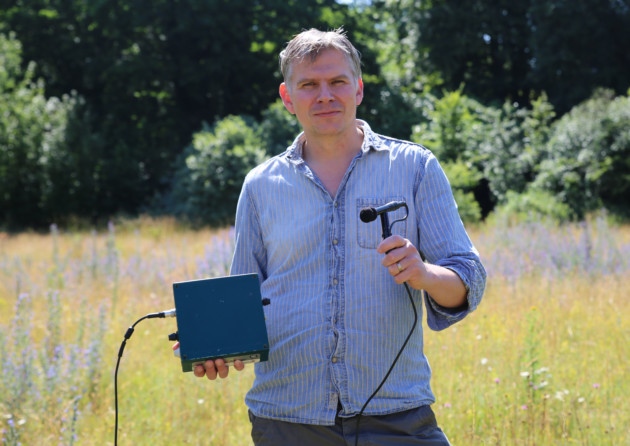 Stuart Newson
Stuart Newson
5 February 2016 12:00am
Report outlines 2016's most pressing conservation issues
 Olivia Bailey
Olivia Bailey
3 February 2016 12:00am
Must-Have Books on Bioacoustics
31 January 2016 4:26pm
(News Article) Listening to the sounds of nature 24-7 in Alberta
31 January 2016 4:16pm
Ecological Acoustics (Ecological Informatics special issue)
29 December 2015 9:56pm

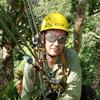

















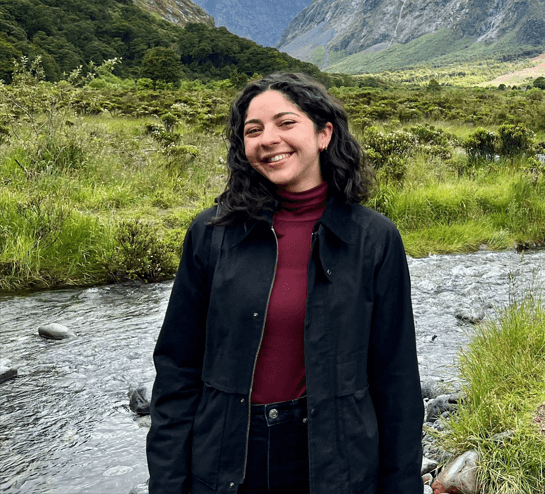


















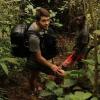







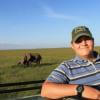


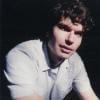
3 November 2016 9:05am
Hi Courtney,
sounds are indeed a very interesting theme. If you ask me, it is one of the most underestimated senses, especially when we are talking about wildlife protection. People tend to make quite a lot of noices that distinguish them from animals ;-)
I am working on a prototype 'soundscape sensor'. The basic idea is to record all sounds at a particular location and calculate a kind of 'normalised' sound. This summary can then be used to listen to sounds that deviate from that. Could be chainsaws, gun shots, car engines, talking people, barking dogs, whatever.
By feeding these sounds to rangers with local knowledge, or to a crowd (like Panthera is doing), the sensor's performance improves over time.
Although we think our first prototype will be ready by the end of this year (recognizing one particular sound within an outdoor environment), subsequent steps are quite challenging. Especially when more than one or two sounds occur at the same time.
If you ask me where we will be in the next few years, I would say:
2017: recognizing any trained sound within a given field context (using a Raspberry)
2018: learning to distinguish compounded sounds (using a backend server)
2019: idem, but then much more efficient, so we can run it on a Raspberry pi
Interested to help us to create this?
Cheers,
Jan Kees